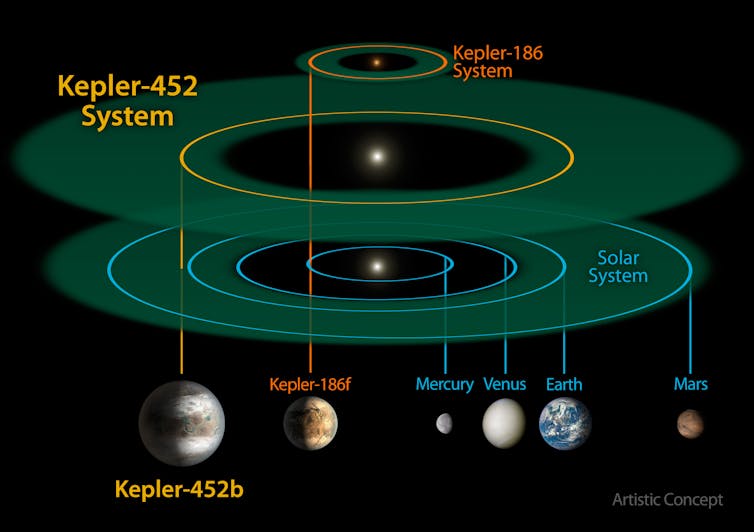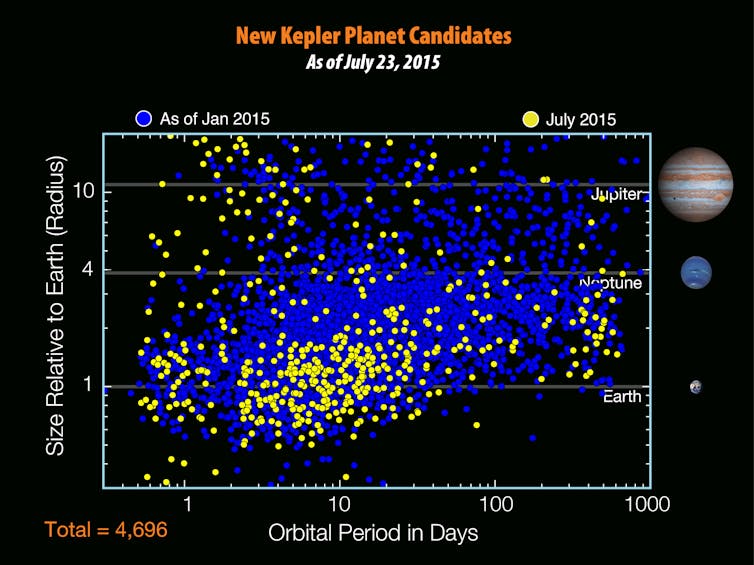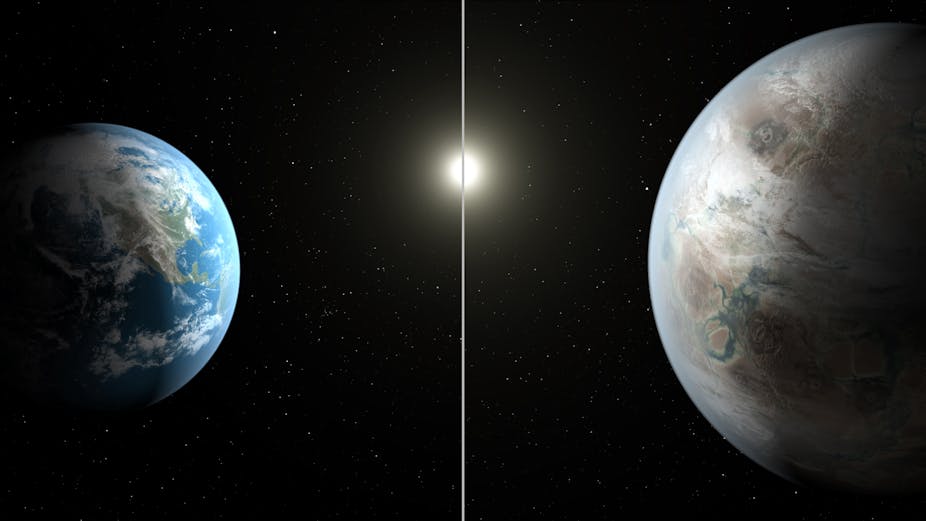NASA has announced the discovery of the most Earth-like exoplanet to date. The new planet – named Kepler-452b – orbits a sun-like star and lies in the star’s habitable zone, an area which is neither too hot nor too cold for orbiting planets to support liquid water on the surface.
An international team of scientists, led by Jon Jenkins from NASA Ames Research Centre in California, discovered the planet alongside 11 other planets in habitable zones using a space-based telescope called Kepler. They made the discovery by monitoring the brightness of stars. A planet transiting in front of a star will create a temporary dip in its brightness as it blocks out a little of its light.

The new planet, which has a 385-day orbit, is possibly a rocky body, a little larger than the Earth with a radius of 1.63 times that of the Earth and twice as much surface gravity. The G2-type star it orbits lies 1400 light years away from Earth.
The exoplanet is only 5% further away from its host star than the Earth is from our sun. Jenkins and his team think the planet has always been in the habitable zone and will remain there for another 3 billion years.

The study of exoplanets began in earnest only 20 years ago with the discovery of larger planets called “hot Jupiters” around distant stars. The latest release of data from the Kepler project has increased the number of new exoplanet candidates by 521 since 2013, meaning there are now nearly 4700 candidates. However further analysis is needed to confirm that they really are planets.
Today, nearly 2,000 planets have been confirmed. Nine planets with a radius less than twice that of Earth was found in the past 4 years’ worth of Kepler data.
The star which the planet orbits has the same temperature and is 20% brighter than our sun. It is also slightly larger than our sun and is 1.5 billion years older. So while Kepler-452b is the closest analogue to our Earth-Sun system yet discovered by Kepler, it may be further along in its evolution. This gives us a glimpse into the future fate of our Earth as the Sun uses up its fuel, expanding and evolving into a red giant.
These fascinating observations of a distant world offer scientists hope that many more Earth-Sun systems may be discovered in the future, helping to quantify how rare our own environment is and offering the possibility to look for signs of life far outside our own Solar System.
The authors speculate that there could have been an ancient civilisation on Kepler-452b or the moon orbiting it. This may even have moved to an outer planet that we are yet to discover to escape the the loss of water as the increasing energy from its aging sun could be warming up the surface. This may yet offer hope to those engaged in searching for technological civilisations on distant planets.

